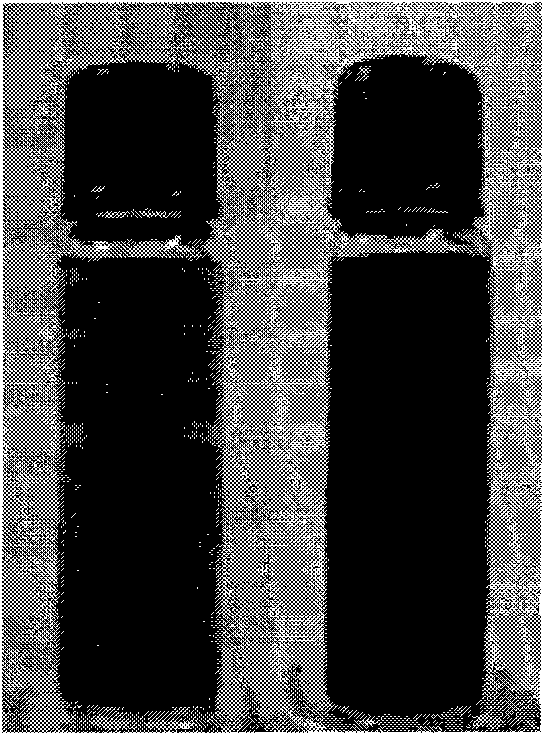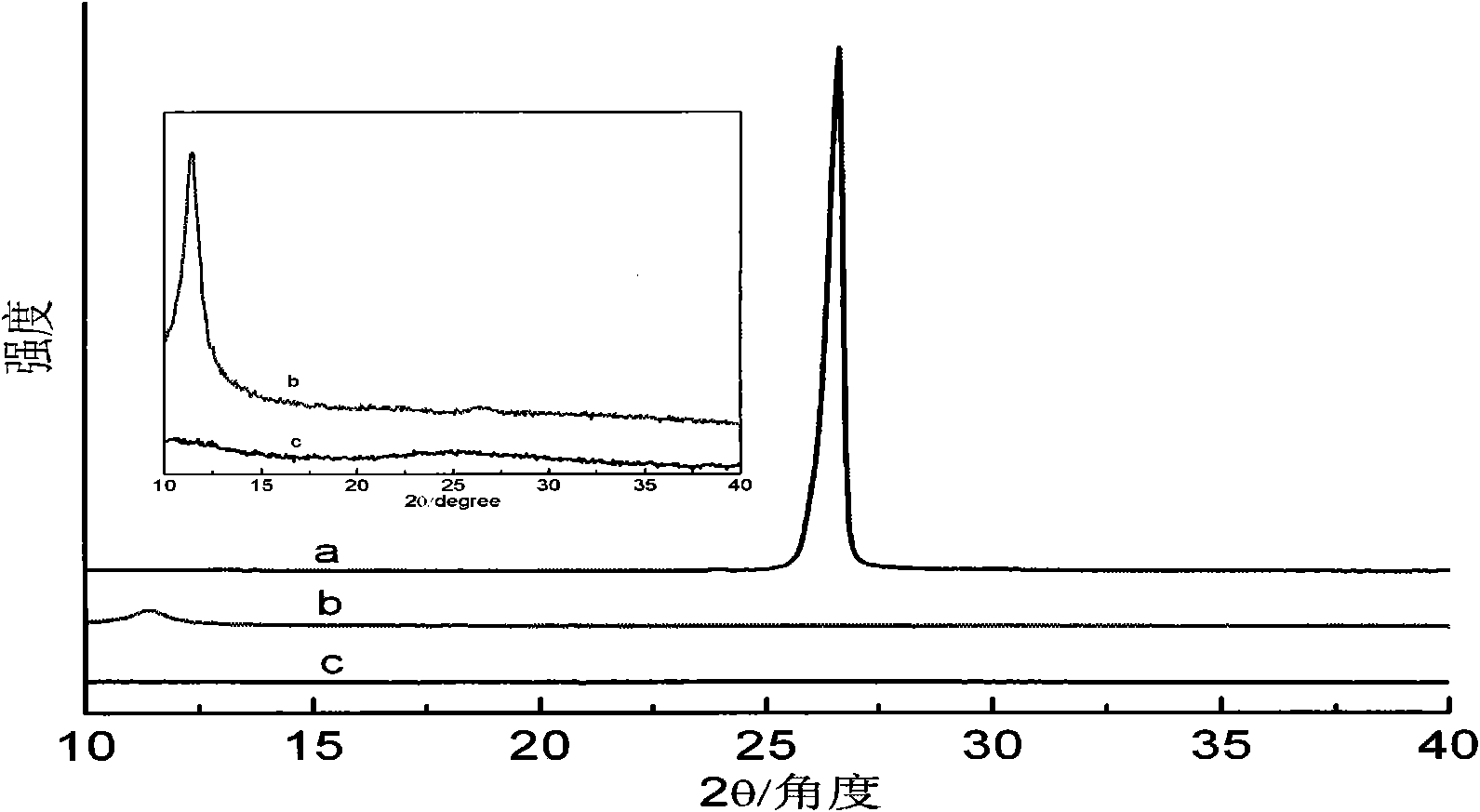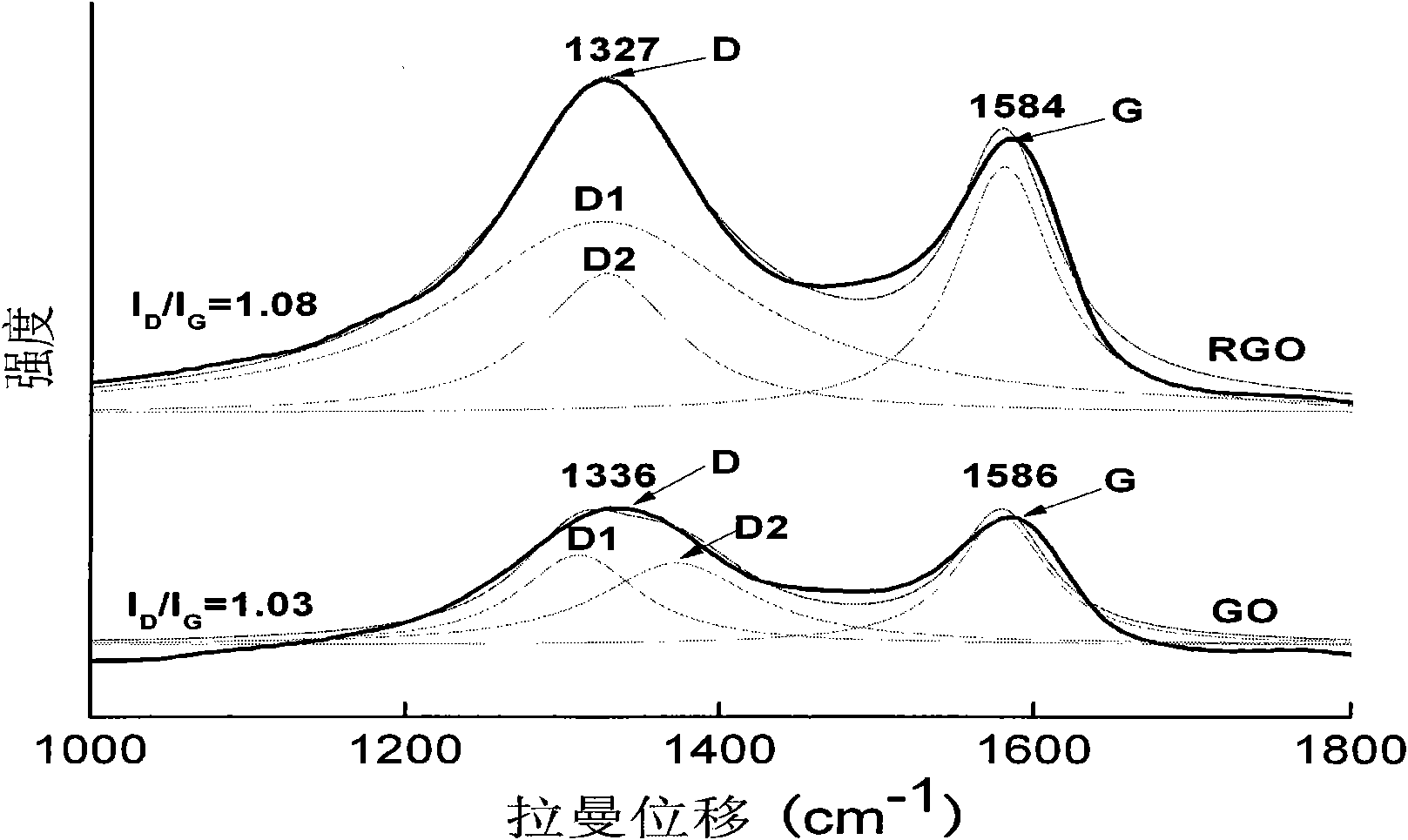Method of adopting laser radiation for preparing reduction-oxidation graphene
A technology of laser irradiation and graphene, which is applied in the field of graphite oxide reduction, can solve the problems of high temperature requirements, low reduction degree, environmental damage, etc., and achieve the effect of simple preparation process, good product quality and high reduction degree
- Summary
- Abstract
- Description
- Claims
- Application Information
AI Technical Summary
Problems solved by technology
Method used
Image
Examples
Embodiment 1
[0034] The method of this embodiment 1 is to first prepare graphite oxide powder according to the prior art; then weigh 10 mg of graphite oxide powder, measure 0.2 ml of potassium hydroxide solution with a mass fraction of 50%, and use water as a solvent to prepare a pH value of 9 100ml of graphite oxide solution. The prepared graphite oxide solution was ultrasonically oscillated for 1 hour using an ultrasonic cell pulverizer to uniformly disperse the graphite oxide in water. Then the ultrasonically oscillated graphite oxide solution was placed under the irradiation of pulsed laser, the parameters of the pulsed laser were: frequency 10 Hz, energy 200 mJ, wavelength 248 nm, and irradiation time 20 minutes. After the above operations, a stable and uniform reduced graphene oxide solution can be obtained.
Embodiment 2
[0036] In the method of Example 2, graphite oxide powder is firstly prepared using the method in the literature. Then weigh 100 mg of graphite oxide powder, measure 0.2 ml of potassium hydroxide solution with a mass fraction of 50%, and use ethanol as a solvent to prepare 100 ml of graphite oxide solution with a pH value of 9. Then, the prepared graphite oxide solution was ultrasonically oscillated for 1 hour using an ultrasonic cell pulverizer to uniformly disperse the graphite oxide in water. Then put the ultrasonically oscillated graphite oxide solution under the irradiation of pulsed laser. The parameters of the pulsed laser are: frequency 20 Hz, energy 100 mJ, wavelength 248 nm, and irradiation time 10 minutes. After the above operations, a stable and uniform reduced graphene oxide solution can be obtained.
PUM
| Property | Measurement | Unit |
|---|---|---|
| wavelength | aaaaa | aaaaa |
Abstract
Description
Claims
Application Information
 Login to View More
Login to View More - R&D
- Intellectual Property
- Life Sciences
- Materials
- Tech Scout
- Unparalleled Data Quality
- Higher Quality Content
- 60% Fewer Hallucinations
Browse by: Latest US Patents, China's latest patents, Technical Efficacy Thesaurus, Application Domain, Technology Topic, Popular Technical Reports.
© 2025 PatSnap. All rights reserved.Legal|Privacy policy|Modern Slavery Act Transparency Statement|Sitemap|About US| Contact US: help@patsnap.com



